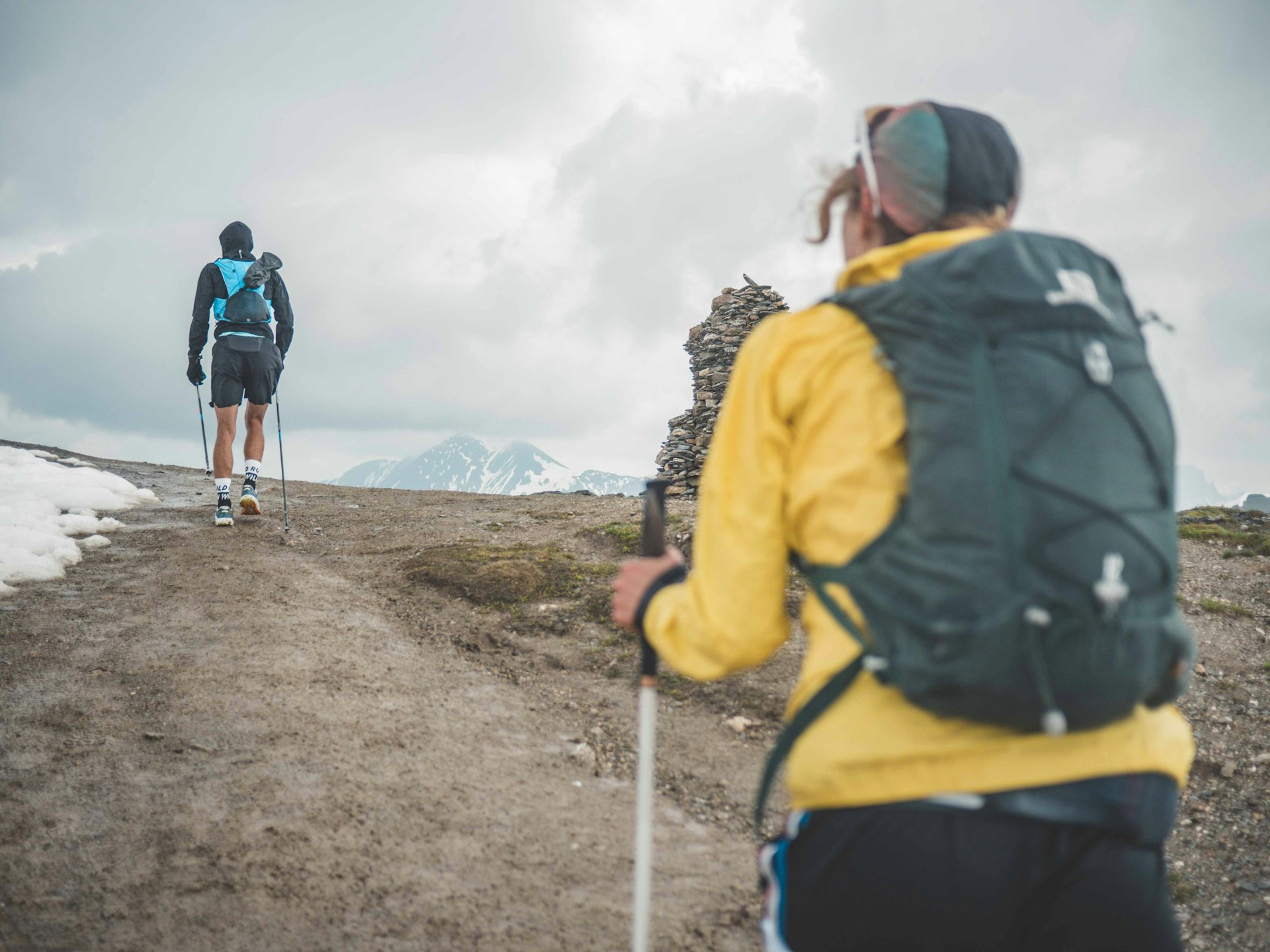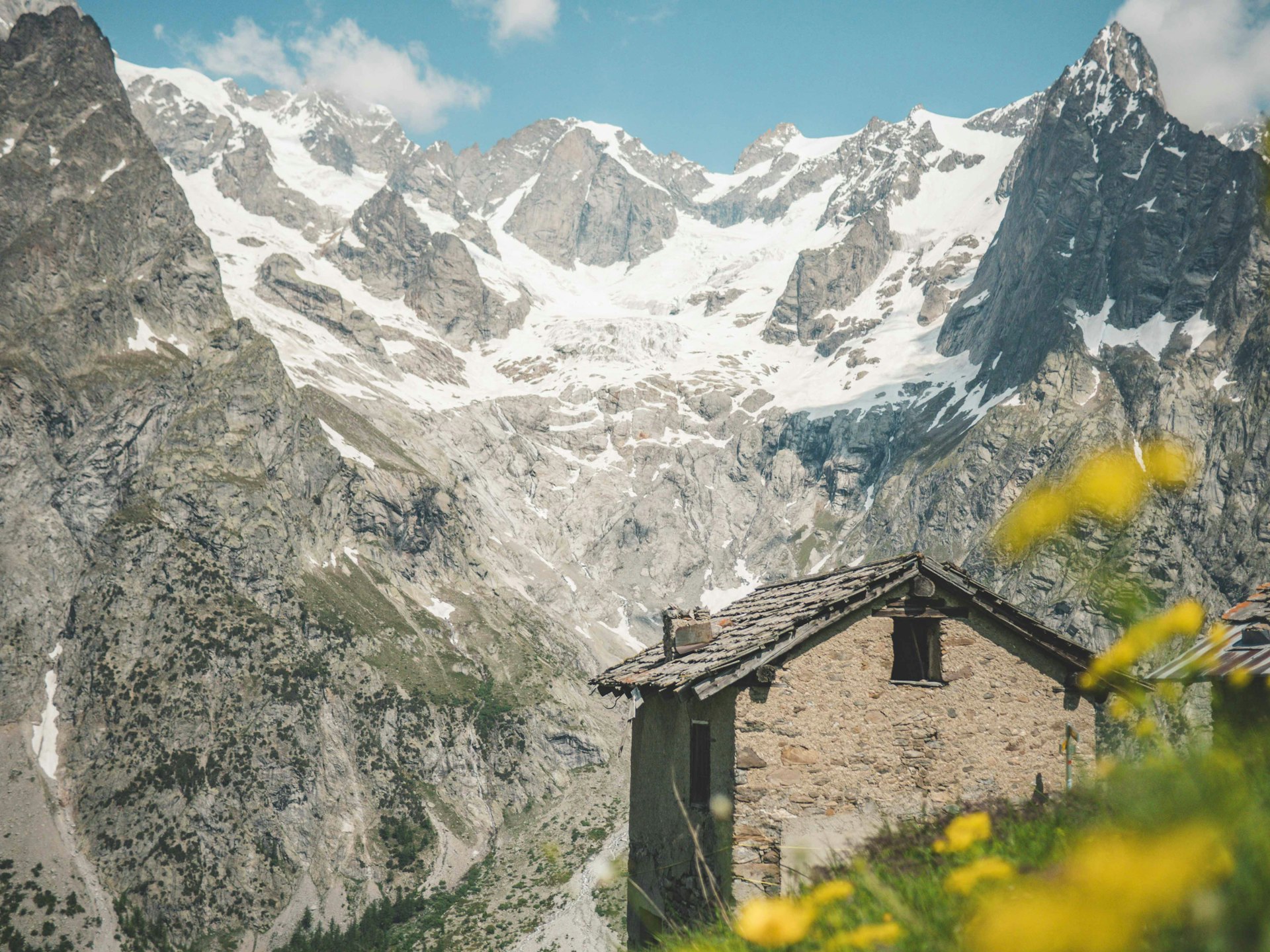If you’ve got one European long-distance hike on your bucket list, it’s probably the Tour du Mont Blanc. It was on mine, too.
Views over sparkling glaciers, Alpine prairies and lots (and lots!) of cheese await anyone who embarks on this border-crossing trek. Circling the largest peak in the Alps, Mont Blanc, the trail covers 170km (105 miles), climbs more than 10,000m (32,800ft) in cumulative altitude, and weaves through three Alpine countries: France, Italy and Switzerland. Typically, the route begins and ends in Les Houches, France, and follows a counterclockwise loop around the mountain range.
Every dream feels far away – until we start to break down what we need to do to achieve it. Here’s what it takes to hike or run the Tour du Mont Blanc.
How I prepared for the Tour du Mont Blanc
Don’t laugh at the folks who’ve sawed off the handle of their toothbrush to save on weight. Many of the climbs along the Tour du Mont Blanc are arduous, and every gram really does count.
My first question as I prepared my bag was, Where would I sleep? Opting for camping would make the trek feel really wild, let me spend more time in nature and give a bit more flexibility about where and when I’d arrive each night. On the flip side, this would mean my home would be on my back (like a turtle), and heavy enough to reduce my walking speed significantly.
The other option was to sleep in refuges, or mountain huts. Refuges can range from rows of bunk beds to rooms that are almost luxurious – yet what they all offer in common is a dry place, sheltered from the elements. Plus (with rare exceptions), the dinners are delicious. Staying in refuges means no need to pack any camping or cooking gear, freeing up a lot of room in your backpack.
Each refuge has its own culture and way of working, says Céline Mila, the gardienne (caretaker) of Refuge des Prés in the Contamines Valley. “Usually that means taking off your shoes before entering, and taking your trash away with you. The best way to get oriented at the refuge is by coming to see us when you arrive – it’s our job to share the mountain culture with you.”
For my 2023 Tour du Mont Blanc, I decided to stay in refuges the whole way.

What is the best time to do the Tour du Mont Blanc?
To beat the crowds, I decided to run the tour in mid-June. Even at the onset of summer, there was still quite a bit of snow above 1800m (5900ft), and many hikers brought along small snow chains to keep from slipping. I loved the extra challenge of the snow and the cooler daytime temperatures. July and August are the busiest months for the route, when the trail can sometimes feel like a highway. By September, things slow down again – but the huts also start to close up for the winter. While weather in the mountains can vary each year, usually July and August have the highest number of stable, rain-free days.
How long does the Tour du Mont Blanc take? And what do you eat along the route?
Hikers typically complete the loop in between seven and 10 days, and the fastest trail runners complete the journey in a staggering 20 hours. Regular trail runners tend to take things a bit slower, between three and four days.
Since I was running the loop in four days, I packed only the barest essentials so as not to weigh myself down: a pair of leggings and a long-sleeve shirt to sleep in, a thin fleece for the mornings, a light raincoat, a pair of light gloves, a change of socks, my toothbrush, sunscreen, sunglasses and a headlamp. Plus, I wanted to eat as much local food as possible: crozets (cheesy pasta) in France, pizza in Italy and croûtes (a cheesy bread melt) in Switzerland.
Dinners were included in my demi-pension, or half-board. For lunch, I usually ordered the refuge’s picnic to eat along the way. While they’re nothing fancy, the sandwiches or even just bread, smoked meat and cheese always hit the spot.
Alix Noblat, an ultra-trail runner and specialist in nutrition in endurance sports, once told me to eat every half hour – before my stomach starts rumbling. So I always keep a snack on me, like protein bars or Snickers. Anything that can give me an energy boost is always in my pack.

The highs and lows of the Tour du Mont Blanc
After a few days on the trail, your sense of time and distance changes. Hikers will no longer measure their day by kilometers or hours traveled – but rather by the cols, or mountain passes, that they’ve reached. The most famous ones are:
- The Col du Bonhomme, which connects the lush Contamines Nature Reserve with the Alpine pastures of the Beaufortaine.
- The Col de la Seigne, at the border between France and Italy, with a spectacular view of Mont Blanc, Aiguille du Peuteurey, Dent du Géan and the treacherous Grandes Jorasses.
- The Col Grand Ferret, at the end of the remote Val Ferret, which brings a long, steep climb – and a descent on the other (Swiss) side that’s rolling and blissful.
- The Col de la Balme, overlooking Chamonix valley, which brings hikers back into France for the final few legs before the finish.
And don’t forget the valleys. The TBM passes through winter-sports hubs like Chamonix and Courmayeur, as well as through smaller Alpine valleys. A standout valley is the Val Ferret: the trail runs high above the lush green pastures on the valley floor, giving a splendid view of the mineral rock faces of the range on the other side. Plus, the Rifugio Walter Bonatti’s cappuccinos are the best you’ll find anywhere above 2000m (6500ft).
Do you need to be in great shape to hike the Tour du Mont Blanc?
You should physically prepare for the hike, yes. Getting in shape for the TMB is a question of cardio training and foot preparation. Hikers should be fit enough to cover their desired distance each day, of course. But don’t forget to prepare your feet to avoid blisters: break in hiking shoes before the first day of the hike, and bring along anti-chafing cream if you’re worried you might have rubs.

Ready to make it happen?
This is a trek you should book early – at least two months out – to find secure space at the refuges. Yet it can be planned at the last minute for those who prefer camping. Autour du Mont Blanc is an easy-to-use website that helps plan daily stages. You can also reserve huts here.
The views…the food…the marmots! The Tour du Mont Blanc delivers at every step.
